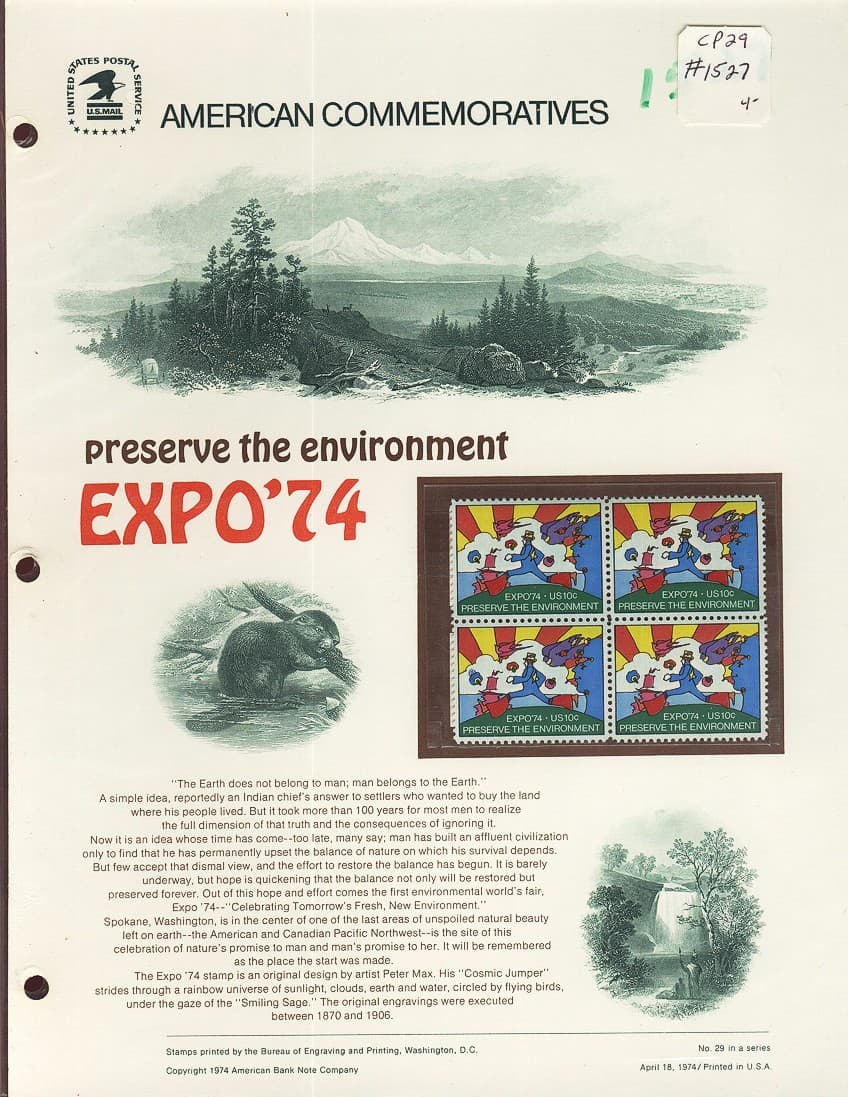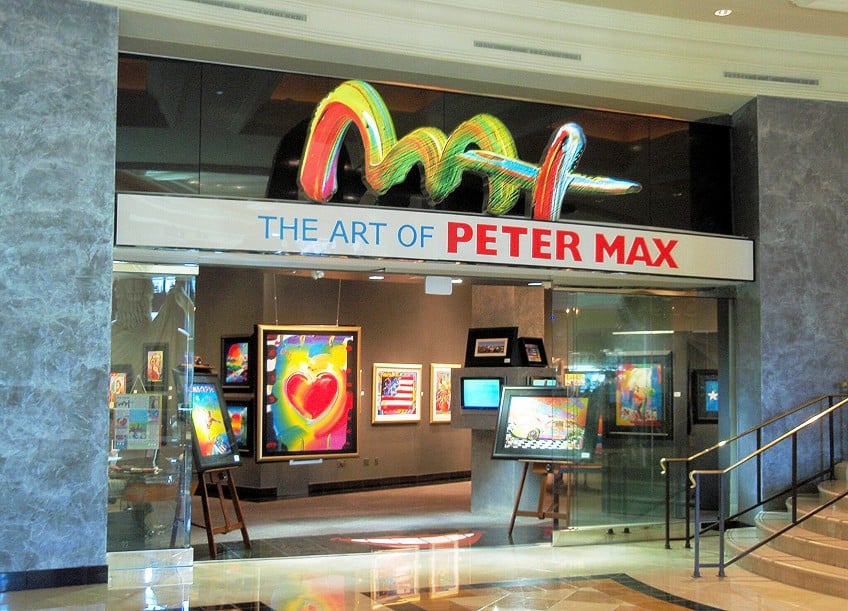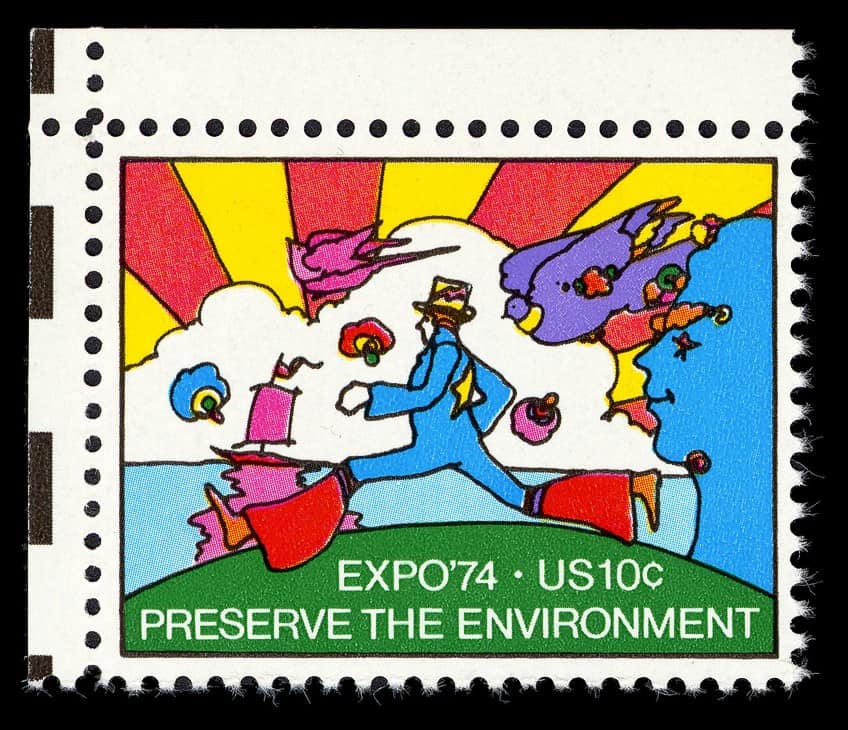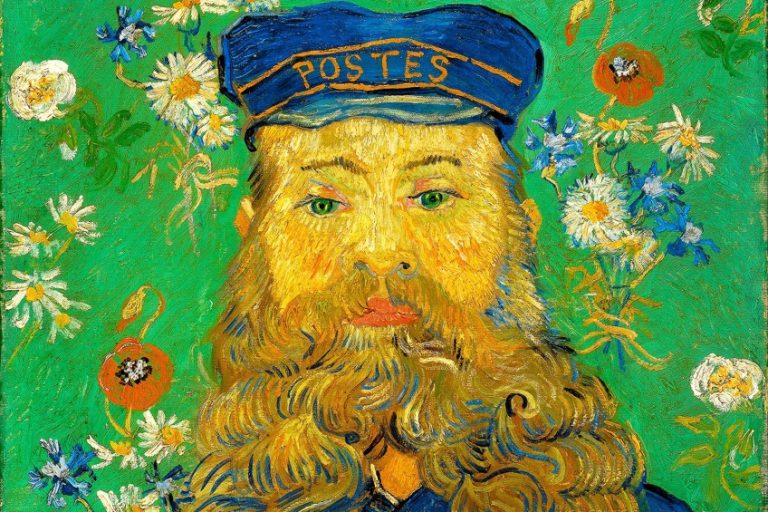Peter Max – A Look at the Life of the American Pop Artist
Peter Max is a renowned artist whose name has become synonymous with vibrant and exuberant creations. His art has captivated audiences around the world, with his signature style characterized by bold colors, cosmic imagery, and a distinct psychedelic aesthetic. In this art history article, we delve into the captivating world of Peter Max, exploring his remarkable paintings and artworks that have left an indelible mark on the art scene. Furthermore, we delve into the life and experiences that have shaped the artistic journey of Peter Max, providing insights into his biography and the influences that have inspired his iconic body of work.
Peter Max Biography
| Name | Peter Max |
| Date of Birth | 19 October 1937 |
| Place of Birth | Berlin, Germany |
| Age | 85 years old |
| Nationality | American and German-Jewish |
| Periods | Pop art and Expressionism |
Peter Max’s journey as an artist reflects a lifelong dedication to pushing artistic boundaries and capturing the essence of the ever-evolving cultural landscape. Through his vibrant paintings and iconic artwork, he has created a visual language that transcends time and continues to captivate audiences worldwide. Let us explore Peter Max’s biography below.
Childhood
Peter Max was born on October 19, 1937, in Berlin, Germany, as Peter Max Finkelstein. At the tender age of one, Max and his family fled the rising Nazi regime, seeking refuge in Shanghai, China, where they spent the next decade.
It was during his formative years in Shanghai that Max’s love for art began to take shape, as he was exposed to the vibrant colors and rich cultural tapestry of the city.
Influences
Max’s diverse cultural experiences, ranging from his Jewish heritage to his exposure to Chinese and Buddhist art, laid the foundation for his unique artistic vision. Additionally, he was deeply influenced by the works of artists like Vincent van Gogh (1853 – 1890), Pablo Picasso (1881 – 1973), and Henri Matisse (1869 – 1954), whose bold use of color and expressive techniques resonated with Max’s own artistic sensibilities.

Training and Early Artworks
After immigrating to the United States in 1953, Max continued his artistic pursuits by enrolling at the Art Students League in New York City. Under the guidance of influential teachers such as Frank Reilly (1906 – 1967) and anatomist Robert Beverly Hale (1901 – 1985), Max honed his technical skills while simultaneously exploring his own artistic style.
During this time, he experimented with various mediums, including painting, illustration, and graphic design, establishing the foundations of his eclectic body of work.
Major Career Achievements
In the late 1960s and early 1970s, Max emerged as a prominent figure in the art world, becoming synonymous with the vibrant counterculture of the era. His iconic Cosmic ’60s style, characterized by its kaleidoscopic imagery, radiant colors, and intricate patterns, captivated the public’s imagination.
Max’s unique blend of psychedelic aesthetics and pop culture references garnered him widespread acclaim, leading to numerous high-profile collaborations with renowned musicians, including The Beatles and The Rolling Stones.
Influence on Pop Art, Expressionism, and Art History
Max’s contributions to Pop Art were notable, as his bold and visually striking imagery resonated with the movement’s celebration of popular culture and consumerism. Pop Art emerged in the 1950s and 1960s as a response to the rise of consumer culture and the mass media. This movement sought to break down barriers between high and low art by incorporating imagery and themes from popular culture.
It celebrated everyday objects, icons, and media imagery, presenting them in bold and vibrant ways. Pop Art aimed to challenge traditional notions of art and engage with the cultural zeitgeist of the time.
Peter Max’s Approach to Pop Art
Max embraced the spirit of Pop Art by incorporating elements of popular culture into his artwork. His rich and vividly colored paintings often feature iconic symbols and images from American society, such as celebrities, political figures, and consumer products.
Max’s unique twist on Pop Art lies in his cosmic and psychedelic imagery, merging the recognizable icons of popular culture with whimsical and otherworldly elements. By infusing his Pop Art-inspired creations with cosmic landscapes and celestial motifs, Max adds a layer of spirituality and wonder to the movement’s signature style.
Expressionism: Emotion and Subjectivity
Expressionism is an art movement that emphasizes subjective emotions and the inner experiences of the artist. It emerged in the early 20th century, with artists seeking to convey their innermost feelings through bold and exaggerated forms, colors, and brushwork. Expressionists aimed to provoke emotional responses from viewers, often using distorted or abstract imagery to depict the intensity of human emotions.
Peter Max’s Approach to Expressionism
While not strictly an Expressionist artist, Max’s work displays elements of Expressionism in his expressive use of color, dynamic compositions, and energetic brushwork. He captures and conveys emotions through bold and vibrant hues, allowing the colors themselves to evoke specific moods and atmospheres.

Max’s brushwork, whether delicate or vigorous, carries a sense of movement and urgency, further enhancing the emotional impact of his artwork. In this way, he channels the spirit of Expressionism, infusing his own artistic style with the movement’s focus on subjective experiences and the power of emotions.
Peter Max’s Art in Context
Peter Max created a body of work that reflects both the socio-political climate of his birth country and his personal artistic journey. This article explores the contextual elements that influenced Max’s art, examining how his work evolved within the backdrop of Germany’s history and his own career. Through a series of subheadings, we delve into the formative experiences, influences, and artistic responses that shaped Peter Max’s unique artistic vision.
Early Influences: A Post-War Germany
In the aftermath of World War II, Germany was undergoing a period of reconstruction and redefinition. Max’s formative years, spent in Shanghai and later in the United States, shielded him from the immediate post-war struggles in his birth country.
Nevertheless, the echoes of Germany’s turbulent past, including the rise and fall of the Nazi regime, would leave an indelible mark on his consciousness and artistic sensibilities.
The Immigrant Experience: Shaping Identity and Perspective
As an immigrant, Max’s personal experiences of displacement and adaptation greatly influenced his art. His exposure to diverse cultures and the challenges of assimilation fostered a unique perspective, blending elements from his German heritage with the cosmopolitanism of his new surroundings. This fusion of cultural influences became a defining characteristic of Max’s art, allowing him to bridge the gap between his German roots and his American identity.
Environmental Activism and Consciousness
In later years, Peter Max’s art took on a new dimension as he became an advocate for environmental causes. Inspired by his love for nature and concerns about the ecological challenges facing the planet, Max’s artwork increasingly incorporated environmental themes.
Through his art, he sought to raise awareness and promote environmental activism, emphasizing the interconnectedness of humanity and the natural world.
The Technical Characteristics of Peter Max’s Artwork
Beyond the striking colors and bold compositions, Max’s art possesses a distinct set of technical characteristics that contribute to its unique appeal. In this section of the article, we explore the technical elements that define Max’s artistic style, shedding light on the techniques, mediums, and processes he employs to bring his imaginative visions to life.
Bold and Vibrant Color Palette
One of the most distinctive features of Max’s artwork is his use of a daring and energetic color palette. From electric blues and fiery reds to radiant yellows and lush greens, his paintings burst with life and energy. Max employs intense, saturated hues that grab the viewer’s attention and create a sense of visual excitement. The strategic juxtaposition and harmonious blending of colors result in dynamic compositions that convey emotion and impact.

Cosmic and Psychedelic Imagery
Max’s art often incorporates cosmic and psychedelic imagery, transporting viewers to otherworldly realms. His paintings feature cosmic landscapes, starry skies, and celestial motifs, evoking a sense of wonder and enchantment.
Through intricate patterns, swirling shapes, and intricate details, Max creates a mesmerizing visual experience that invites viewers to explore the vast depths of his imagination.
Layering and Texturing Techniques
Max employs layering and texturing techniques to add depth and dimension to his artwork. He builds layers of paint, creating a sense of depth and complexity within his compositions. By incorporating texture through brushstrokes, impasto application, and mixed media elements, Max adds tactile qualities to his paintings, enhancing their visual and sensory impact.
Expressive Brushwork
The expressive brushwork in Max’s artwork contributes to the overall energy and movement within his compositions. Whether it’s bold, sweeping strokes or delicate, intricate lines, his brushwork exhibits a sense of spontaneity and fluidity. Max’s confident and free-flowing brushwork allows him to capture the essence of his subject matter, conveying emotions and evoking a sense of dynamism.
Experimentation With Mediums
Throughout his career, Max has embraced experimentation with various mediums. He has worked with acrylic paints, oils, mixed media, and digital art, showcasing his versatility and adaptability as an artist. Max’s exploration of different mediums allows him to push artistic boundaries and continuously evolve his artistic style.
Attention to Detail
Despite the vibrant and exuberant nature of his artwork, Max also demonstrates meticulous attention to detail. In his intricate patterns and intricate designs, every element is carefully crafted, contributing to the overall cohesiveness and balance of his compositions.
This attention to detail adds an additional layer of visual interest, inviting viewers to examine his artwork up close and discover hidden nuances.
Visual and Conceptual Analysis of Cosmic Runner (2011)
| Title | Cosmic Runner |
| Date | 2011 |
| Medium | Acrylic paint on canvas |
| Dimensions (cm) | 61 x 61 |
| Style | Contemporary Art and Pop Art |
| Location | N/A |
Peter Max’s Cosmic Runner is a visually captivating painting that encompasses dynamic movement, lively colors, and a profound symbolic narrative. Through its composition, subject matter, color and light, texture, perspective, and symbolism, the artwork invites viewers into a cosmic journey, inspiring a sense of wonder, determination, and the pursuit of endless possibilities.
Compositional Overview
In Peter Max’s famous painting, Cosmic Runner, the composition is a captivating display of dynamic movement and energy. The artwork has a center axis that draws the viewer’s attention. The composition is divided into two distinct sections—a vibrant cosmic landscape in the background portion and a running figure in the foreground portion.
The placement of the figure in the foreground creates a sense of depth and visual balance, while the surrounding cosmic elements add a sense of expansiveness and otherworldliness.
Subject Matter
The subject matter of Cosmic Runner centers around a dynamic and energetic figure in motion. The central focus is a human-like figure running with arms outstretched, appearing to glide effortlessly through the cosmic landscape. The figure embodies a sense of freedom, agility, and determination.

It represents the human spirit’s relentless pursuit, transcending physical limitations and exploring boundless horizons. The subject matter conveys a powerful message of endurance and the desire to explore and reach new frontiers.
Color and Light
Max’s use of color in Cosmic Runner is vivid and mesmerizing. A rich palette of electric blues, vibrant yellows, and deep purples dominates the cosmic landscape, creating a sense of depth and cosmic atmosphere. The use of bright, intense colors evokes a feeling of energy and excitement.
The interplay of light and shadow adds depth and dimension to the composition, highlighting the contours of the figure and enhancing the overall sense of movement.
Texture
The texture in Cosmic Runner is varied and engaging. Max employs a combination of smooth brushwork, delicate lines, and textured elements to create visual interest. The cosmic landscape showcases a blend of smooth, ethereal gradients and intricate patterns, adding depth and complexity.
In contrast, the figure’s surface features more pronounced brushwork and texture, further emphasizing the physicality and movement of the runner. The juxtaposition of different textures enhances the overall tactile experience of the painting.
Perspective and Form
In terms of perspective, Cosmic Runner employs a combination of multiple viewpoints. The cosmic landscape is presented in a more flattened, abstract manner, while the figure is rendered with a sense of three-dimensionality and realism. The runner’s form is elongated, accentuating the sense of motion and speed. The exaggerated proportions and elongated limbs convey a dynamic sense of stretching and reaching beyond physical boundaries.
This distortion of form adds to the overall energy and expressiveness of the artwork.
Conceptual Analysis
Peter Max’s painting, Cosmic Runner, goes beyond its visual elements to convey a profound conceptual message. This artwork explores themes of transcendence, exploration, and the human spirit’s eternal quest for growth and self-discovery. Through its composition, symbolism, and cosmic elements, Max invites viewers to contemplate the relationship between humanity and the universe, encouraging us to embrace our limitless potential and the wonders that lie beyond our perceived boundaries.
At its core, “Cosmic Runner” symbolizes the human desire to push beyond limitations and explore the unknown. The central figure, with arms, outstretched and a determined expression, embodies a sense of determination and freedom.
This cosmic runner represents the human spirit’s relentless pursuit of dreams, aspirations, and personal growth. Max captures the essence of the runner’s motion, freezing a moment in time that represents the perpetual movement and progress in our lives.
The cosmic landscape surrounding the figure amplifies the conceptual depth of the painting. The vibrant colors, swirling patterns, and celestial motifs evoke a sense of wonder and otherworldliness. The cosmic elements symbolize the vastness of the universe and the infinite possibilities that await us. They remind us that we are part of something greater, connected to the cosmic fabric of existence. Through this symbolism, Max encourages us to expand our horizons, challenge ourselves, and explore the uncharted territories of our potential.
The concept of transcendence permeates “Cosmic Runner”. By presenting the figure as both human and cosmic, Max blurs the boundaries between the earthly and the celestial. The elongated form and distorted proportions of the runner suggest a departure from physical limitations, emphasizing the ability to reach beyond our perceived boundaries.
This blending of the human and the cosmic signifies the interconnectedness of our aspirations, dreams, and the greater universe. Furthermore, Cosmic Runner invites viewers to reflect on the harmony between humanity and the cosmos. The runner’s integration into the cosmic landscape signifies a sense of unity and symbiosis. It suggests that our personal growth and exploration are inherently connected to the vastness of the universe. Max reminds us that the human experience is intertwined with cosmic forces and that our journey through life is a cosmic dance of self-discovery and interconnectedness.
Visual Analysis of Statue of Liberty II (Unknown)
| Title | Statue of Liberty |
| Date | Unknown |
| Medium | Acrylic paint on canvas |
| Dimensions (cm) | 66.04 x 33.02 |
| Style | Contemporary Art, Expressionism, and Pop Art |
| Location | N/A |
Peter Max’s Statue of Liberty II painting showcases a dynamic composition, vibrant colors, and profound symbolism. The artwork encapsulates the strength and spirit of the iconic statue, reminding viewers of the enduring values it represents.
Compositional Overview
Peter Max’s Statue of Liberty II painting is a vibrant and iconic representation of one of the world’s most recognized symbols of freedom. The composition is centered on the majestic figure of the Statue of Liberty, standing tall and proud. The statue is positioned slightly off-center, allowing space for a radiant and colorful background. The composition utilizes strong diagonal lines, leading the viewer’s gaze from the bottom left corner, up the statue, and towards the top right corner.
This creates a dynamic sense of movement and energy, while also emphasizing the significance and stature of Lady Liberty.
Subject Matter
The subject matter of Statue of Liberty II is the iconic Statue of Liberty herself. This symbol of freedom and democracy stands as a powerful representation of hope, liberty, and the pursuit of dreams. Max’s interpretation captures the essence of the statue’s strength and grace, conveying the spirit of America and its ideals. The subject matter serves as a reminder of the values and aspirations that the statue embodies, resonating with audiences around the world.
Color and Light
Color plays a vital role in Max’s Statue of Liberty II painting. The artwork is filled with vibrant and contrasting hues, creating a sense of visual excitement and energy. The statue is depicted in bold, primary colors, with the flame of the torch shining bright in fiery orange and yellow tones.
The background features a dazzling array of blues, yellows, and purples, representing the sky, sea, and cosmos. The use of intense and saturated colors adds a dynamic and eye-catching quality to the painting, enhancing the symbolism and impact of the subject matter.
Perspective and Form
The perspective in Statue of Liberty II is straightforward, with a frontal view of the statue. The form of the statue is rendered with accuracy and attention to detail, capturing the recognizable features and silhouette. The statue’s form is presented with a sense of solidity and three-dimensionality, conveying its imposing presence.
The perspective allows the viewer to engage directly with the statue, evoking a sense of connection and reverence.
Symbolism
Statue of Liberty holds profound symbolic significance. The statue itself represents freedom, democracy, and the ideals of liberty and opportunity. Max’s interpretation emphasizes these values through his vibrant color palette, dynamic composition, and energetic brushwork.
The intense colors and the dynamic composition convey the vitality and enduring spirit of the statue, serving as a powerful symbol of hope and inspiration. Through his artwork, Max captures the essence of the statue’s significance and its role as a beacon of freedom for people around the world.
In conclusion, Peter Max’s contributions to the art world are undeniable. Through his vibrant and captivating artwork, Max has established himself as a masterful artist, leaving an indelible mark on the art scene. His unique style, characterized by intense colors, celestial imagery, and a mix of Pop Art and Expressionism, has garnered international acclaim and recognition. Max’s paintings, encompassing a wide range of subjects and themes, capture the essence of his boundless imagination and the human spirit’s pursuit of freedom, growth, and connection. With an impressive body of work spanning decades, Peter Max’s biography is intertwined with his art, reflecting his personal experiences, influences, and unwavering dedication to pushing artistic boundaries. As we explore the rich tapestry of Peter Max’s art, we are reminded of the power of creativity to inspire, uplift, and transcend boundaries, solidifying his legacy as an iconic figure in the world of art.
Frequently Asked Questions
What Is the Most Expensive Peter Max Painting?
The most expensive Peter Max painting to date is Liberty Head, which was sold at auction for a staggering $1.2 million in 2018. This vibrant and iconic artwork showcases Max’s signature style, featuring a kaleidoscope of colors and the symbolic representation of Lady Liberty. The record-breaking price reflects the high demand and value placed on Peter Max’s artwork by collectors and art enthusiasts. It is worth noting that prices for his paintings can vary, and new sales records may emerge in the future as the market evolves and new masterpieces by Peter Max come to light.
What Is Peter Max Famous For?
Peter Max is famous for his vibrant and iconic artwork that captures the spirit of the 1960s counterculture and his artworks have become synonymous with this era. He is renowned for his bold use of color, cosmic imagery, and his unique blend of Pop Art and Expressionism. Max’s distinctive style and his collaborations with prominent musicians and public figures, such as The Beatles and the Statue of Liberty, have propelled him to international fame. His artwork, often featuring vibrant landscapes, psychedelic patterns, and iconic symbols, resonates with audiences worldwide and has made him a celebrated and influential figure in the art world.
What Is an Interesting Fact About Peter Max?
An intriguing and rarely-known fact about Peter Max is that he has been a passionate advocate for environmental conservation throughout his career. In addition to his artistic pursuits, Max has actively supported various environmental causes and organizations. He has used his artwork as a platform to raise awareness about the importance of preserving our planet and promoting sustainability. Max’s commitment to environmental activism is a testament to his multifaceted nature as an artist and his desire to make a positive impact beyond the realm of art.
What Interesting Collaborations Has Peter Max Done in His Career?
Another lesser-known fact about Peter Max is his involvement in designing and creating album covers for several notable musicians. Max’s artistic talent extended beyond canvas and paint, as he has collaborated with musicians to visually represent their music through album artwork. Some of his notable album cover designs include works for albums by artists such as The Rolling Stones, Aerosmith, and Alice Cooper. This unique aspect of Max’s career highlights his versatility as an artist and his ability to seamlessly merge the worlds of visual art and music.
What Was Peter Max’s Background Before Becoming an Artist?
Peter Max was a graphic designer in his early career. Before gaining widespread recognition as a fine artist, Max worked in the advertising industry, designing graphics for various clients. His experience in graphic design allowed him to develop a keen eye for composition, typography, and visual communication. This foundation in graphic design greatly influenced his later artistic style, as Max incorporated elements of bold typography and strong visual messaging into his artwork. This lesser-known aspect of his career highlights the diverse range of skills and artistic influences that contributed to his success as an artist.
Nicolene Burger is a South African multi-media artist, working primarily in oil paint and performance art. She received her BA (Visual Arts) from Stellenbosch University in 2017. In 2018, Burger showed in Masan, South Korea as part of the Rhizome Artist Residency. She was selected to take part in the 2019 ICA Live Art Workshop, receiving training from art experts all around the world. In 2019 Burger opened her first solo exhibition of paintings titled, Painted Mantras, at GUS Gallery and facilitated a group collaboration project titled, Take Flight, selected to be part of Infecting the City Live Art Festival. At the moment, Nicolene is completing a practice-based master’s degree in Theatre and Performance at the University of Cape Town.
In 2020, Nicolene created a series of ZOOM performances with Lumkile Mzayiya called, Evoked?. These performances led her to create exclusive performances from her home in 2021 to accommodate the mid-pandemic audience. She also started focusing more on the sustainability of creative practices in the last 3 years and now offers creative coaching sessions to artists of all kinds. By sharing what she has learned from a 10-year practice, Burger hopes to relay more directly the sense of vulnerability with which she makes art and the core belief to her practice: Art is an immensely important and powerful bridge of communication that can offer understanding, healing and connection.
Nicolene writes our blog posts on art history with an emphasis on renowned artists and contemporary art. She also writes in the field of art industry. Her extensive artistic background and her studies in Fine and Studio Arts contribute to her expertise in the field.
Learn more about Nicolene Burger and the Art in Context Team.
Cite this Article
Nicolene, Burger, “Peter Max – A Look at the Life of the American Pop Artist.” Art in Context. July 20, 2023. URL: https://artincontext.org/peter-max/
Burger, N. (2023, 20 July). Peter Max – A Look at the Life of the American Pop Artist. Art in Context. https://artincontext.org/peter-max/
Burger, Nicolene. “Peter Max – A Look at the Life of the American Pop Artist.” Art in Context, July 20, 2023. https://artincontext.org/peter-max/.











